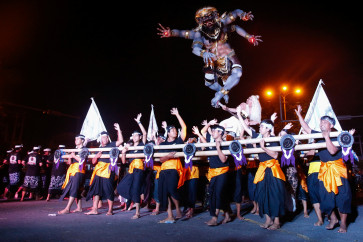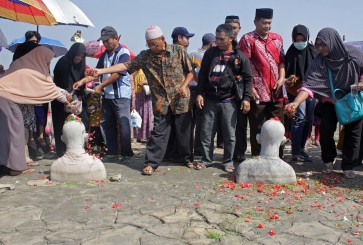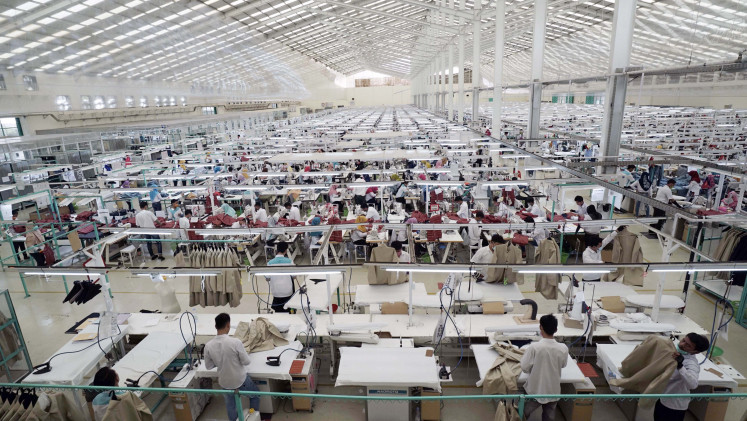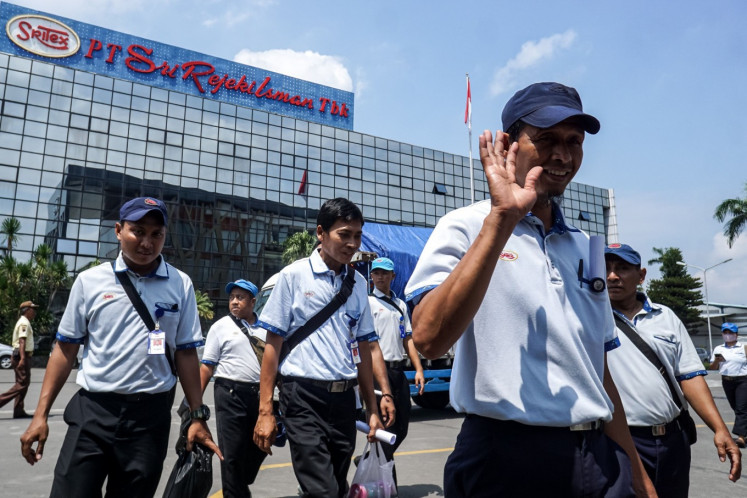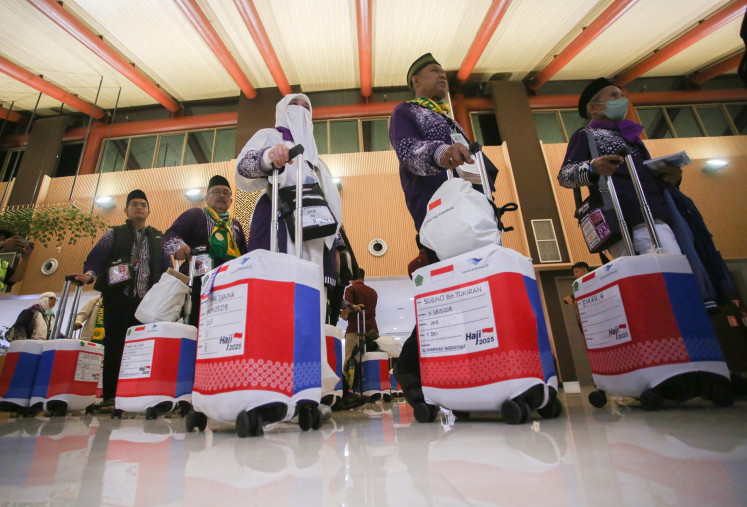Angkot daze: the complicated history of Indonesia's public transportation
The tangled existence of Bandung's angkot and its future in the city’s modern landscape
Change text size
Gift Premium Articles
to Anyone
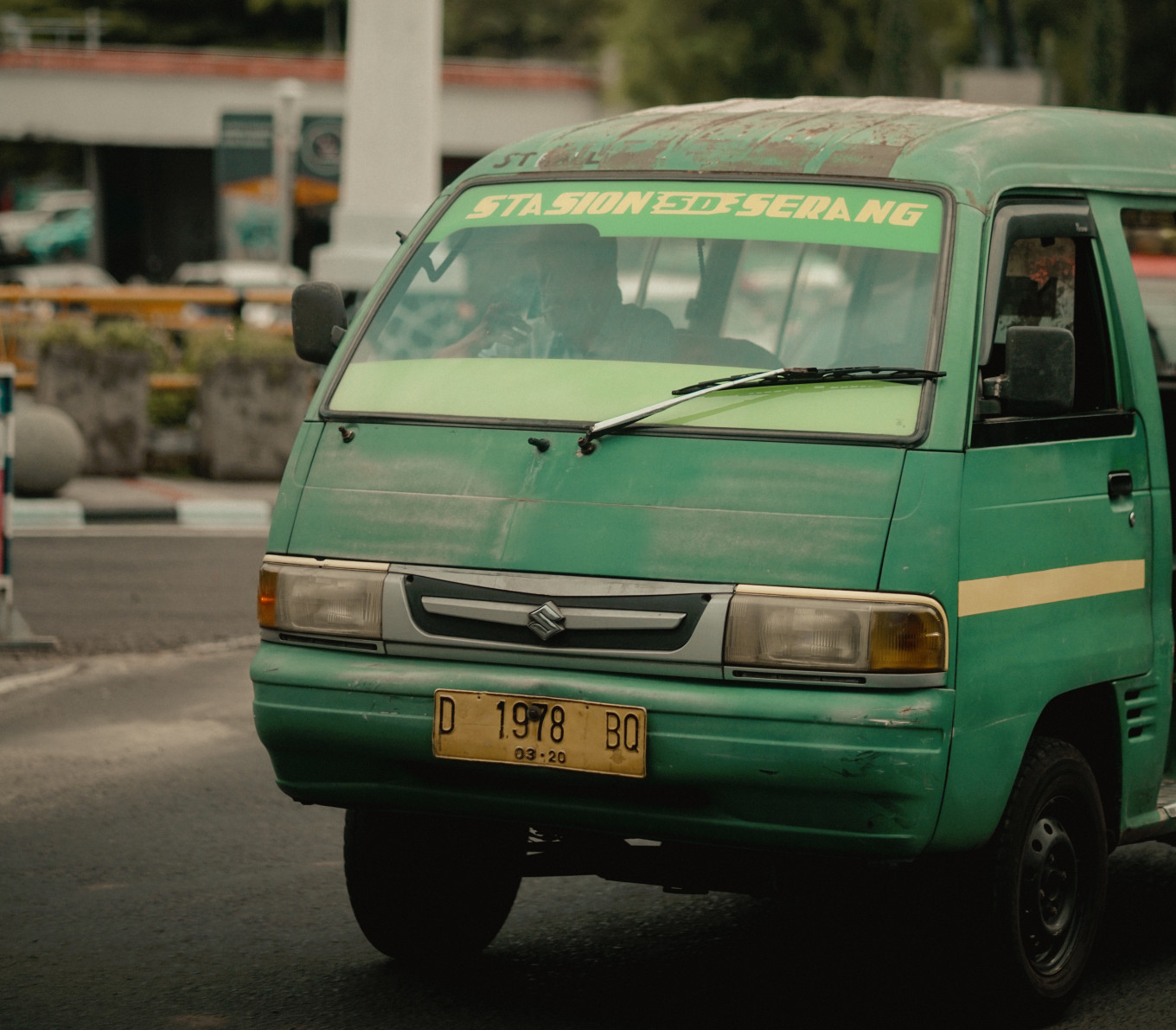
The tangled existence of Bandung's angkot and its future in the city’s modern landscape.
The angkot, short for “angkutan kota” (city transportation), holds a lot of meaning for most people in Bandung. While some may romanticize its existence and reminisce about the olden times where people would mostly rely on the angkot in getting around the city, others would point their finger at the color-coded armada and blame them for being a hindrance to progress in these modern times.
![Tension: Although facing a lot of resistance, the government is pushing forward with the Bus Rapid Transit program, projecting a conversion from angkot to bus in 2023. “Drivers would not need to worry. Now you're driving angkot, but then you'd be the bus driver [in the future],” said Darmawan, the head of Department of Transportation in Bandung, speaking from Bandung City Hall, Dec. 26, 2022. Courtesy Fiqry Choerudin/ Unsplash.](https://img.jakpost.net/c/2023/01/04/2023_01_04_134141_1672801304._medium.jpg)
Grassroots
In 2010, a stocky young man was running in the middle of Jl. Tamansari, just 50 meters away from the Bandung Institute of Technology (ITB) rear gate, clasping his brown satchel and yelling: “pickpocket!”
He was chasing an angkot that he just rode in, realizing that he had lost his wallet not long after alighting. The north-bound angkot, however, did not stop and the young man got tired of chasing it. He breathed frantically as he slowed down his steps while cars, inches away behind him, were honking their horns.
It was one of the most vivid memories of my days as a student living in Bandung. Although it was rare to witness, rumors of ‘unpleasantness’ associated with riding an angkot circulated a lot. Mine, fortunately, revolved only around being dropped off in the middle of the journey, usually for the driver to either turn back avoiding traffic or just simply to go home.
Nonetheless, the angkot was the main mode of transportation in Bandung that touted the largest service coverage when compared with larger vehicles such as buses, especially before the advent of ride-hailing apps. It was seemingly the most versatile public transportation suitable to the narrow roads and the hilly terrains of the city.
“There was a void in public transportation until the 1960s, 1970s in Indonesia,” said Muhammad Zulyadri, one of the members of the community-led platform Transport for Bandung, speaking to The Jakarta Post on Dec. 26, 2022. “In the 1960s, Indonesia was dismantling its tram services, deeming it a remnant of the colonial era. However, the development of the public mode of transportation was not apparent back then,” he continued.
The angkot then emerged as the solution in Indonesia. The mode of transportation, until now, is largely privately operated. According to Bandungkiwari’s 2019 interview with Frans Ari Prasetyo, an urban planning researcher in Bandung, angkot’s history in the city can be traced back to the 1970s.
These days, the landscape of the angkot in Bandung is significantly more complicated and intertwined, with numerous cooperatives and even private ventures, each with their own fleet, coexisting together in each of the 39 routes in Bandung, notes Zulyadri. “[The routes] would be in the hundreds, if we’re adding the [angkot routes] in Bandung District,” followed Naufal Farras, Zulyadri’s fellow member.
Bandung angkot’s current clientele range from school children, commuters, peddlers to even the occasional tattered vagabonds making their way through the city. Its operations paint a stark, almost-haggard picture of the society that makes up the majority of Indonesia, one that is rather sentimental and somewhat humble.
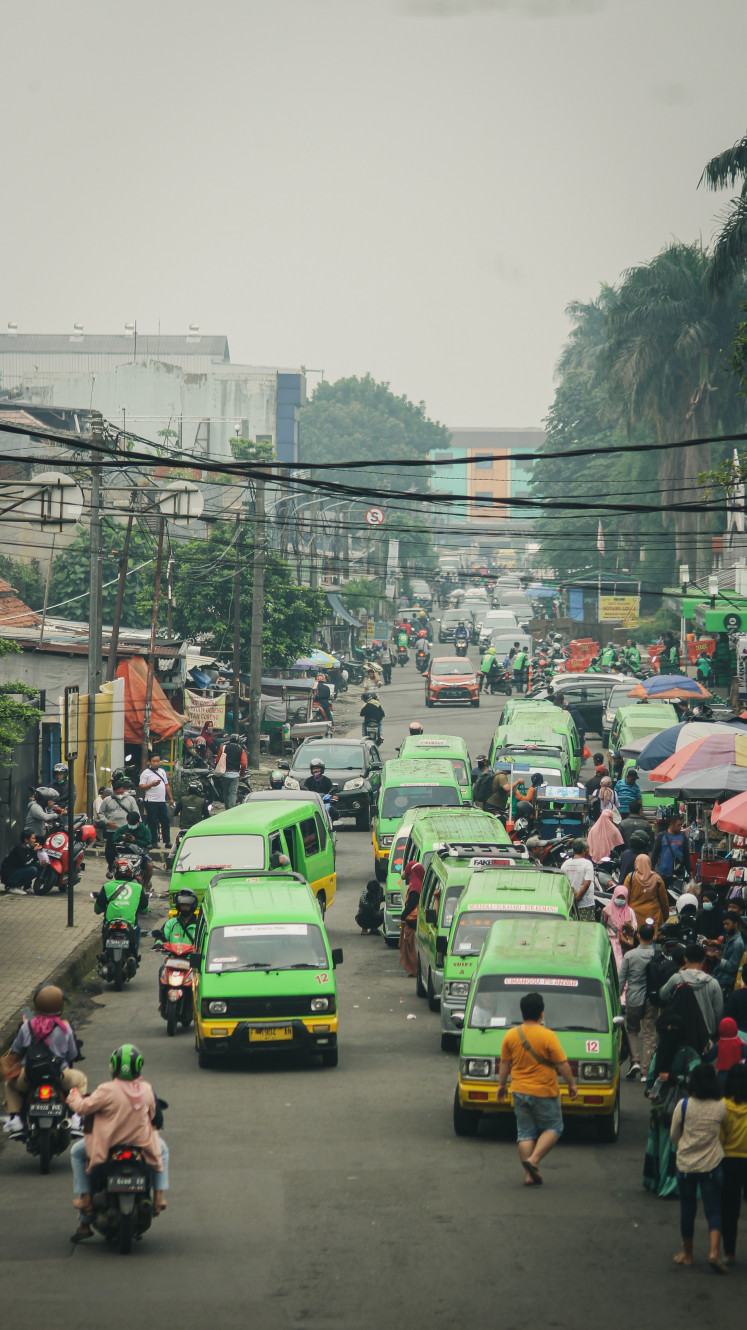
The Times They Are A-Changin’
Under the barrage of ride-hailing apps and petrol price hikes, the angkot is seemingly facing a severe downturn period. Deni, one of the angkot drivers on the Caheum-Ledeng route, claimed that there were only around 80 cars left for the route. “Before, the numbers could easily pass 150 [cars],” said Deni. He squinted his eyes as an SUV with blue headlights passed the angkot, throwing a string of Sundanese swear words all the while. “Most of the fleet was sold to buyers outside the [Java] island,” Deni said.
The situation was seemingly quite dire for the drivers, yet the angkot lacked improvement in service and sometimes rejected the notion of adapting with the changing times.
On April 8, 2022, a 63-year-old angkot driver bursted onto one of the state-operated Trans Metro Pasundan (TMP) buses. The vehicle was running on the then-newly opened route, which traveled from Baleendah to Bandung Electronic Center. “Stop! Go back to your [bus] pool or I will end you,” the man threatened the bus driver in a viral video that was recorded by one of the passengers.
The man, who was identified to be the head of a local angkot association, was then apprehended by the police. “That was the first case,” said Muhammad Alfrido, another member of Transport for Bandung. “The second one was smack-dab at Baleendah, right at the departure point. The bus was practically under siege by the angkot.”
A similar case happened in Soreang, Bandung district, on April 22, 2022, when a fleet of angkot cut off a TMP bus in front of Hotel Soreang and demanded the driver to stop the journey. Afterward, the service was halted for six months.
On Sept. 29, 2022, operators announced that the bus would once again continue their service for Corridor 1 (Gading Tutuka-Leuwipanjang route) only to be intercepted again by angkot drivers within less than 24 hours.
A change.org petition was put up by Transport for Bandung, demanding the service be brought back. “More than 5,000 people signed the petition. Turns out, before we made the web page, the locals had already started gathering signatures. Physical signatures,” said Raihan Aulia, Transport for Bandung’s founder.
Under the current downturn, the outbursts seemed rather understandable. Also, considering the nature of the angkot in Bandung, which Zulyadri noted as “grassroots” as it emerged in Bandung as a bottom-up solution in filling the void of public transportation in the city, operators and policy makers need to take into account the existing social structures embedded behind the mode of transport.
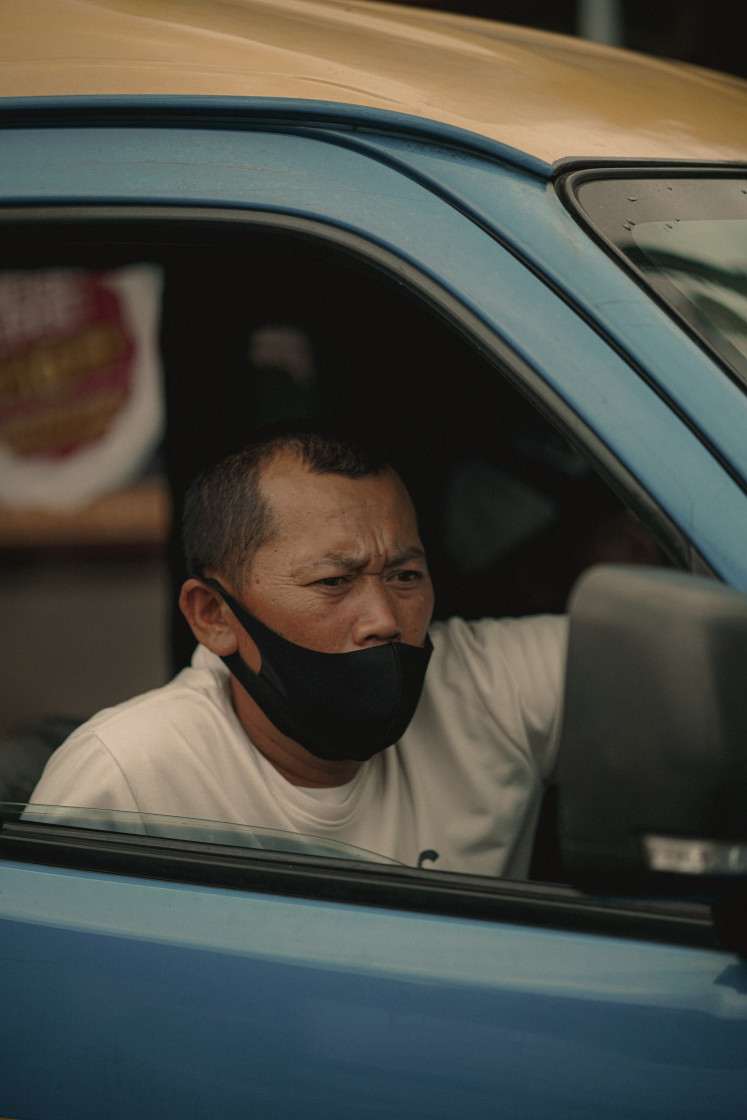
Coexisting
Despite the bad PR and its heavily stigmatized image, the angkot in Bandung has not always been bad. Alfrido pointed out that there is a particular operator that delivers a generally pleasing service. “Margahayu Raya to Ledeng,” he said, referring to the service route. Alfrido grew up in the area near the departure point and noted that the Margahayu Raya to Ledeng angkot was almost like ‘clockwork’.
Aside from having an effective checker system in place against drivers making a U-turn before reaching their terminus, the drivers’ attitude, in general, contrasts with the majority. “They all queue up and don’t park all over the place, they even wear uniforms. The system is really neat.”
A different attitude is seemingly apparent as other routes had differing experiences, where a cooperative was even pushed toward disbandment. Drivers complained and banded against their respective route’s system.
Coexisting, however, is a very probable scenario for the near future. Taking example from the now-solved Baleendah incident, the angkot, in reality, is willing to embrace progress.
“The good thing about the Ciparay angkot is that, after being given a certain level of understanding to observe a bit [before reacting to the changes], the drivers managed to find their own pattern,” said Zulyadri. “They then waited at the bus terminus at Baleendah for passengers continuing their journey to Ciparay and others.”
The Ciparay angkot then functions indirectly as a feeder for the bus route organically. “They understand that there’s potential in [progress],” Zulyadri said.
“I think I’d agree with what Ridwan Kamil said during the Bus Rapid Transit [BRT] launch,” Zulyadri mused. On Dec. 24, the West Java Governor attended the launching event for Bandung’s new mass transit bus. “The angkot will never disappear. In Indonesia, the angkot predates other modes of transportation and it concerns the livelihood of many people.”
The most feasible scenario is to reorganize the angkot in Bandung, in relation to other modes of transportation. “Jakarta was able to do it. Solo, too,” Zulyadri continued. “Semarang as well, but Semarang was a conversion scenario. The angkot was converted to buses,” Alfrido chimed in. “But the operators were the same [people who operated the angkot],” Zulyadri added.
Zulyadri further emphasized that the immediate step would be for the angkot to form cooperatives “so that they would be legal to operate.” Cooperative membership has been quite a problem in the angkot business in Bandung, as the conduct is just too sporadic. Operators ranged from a cooperative level to even a one-fleet operation, leading to a landscape that is significantly harder to regulate. “The key would be to embrace them,” Alfrido concluded.

